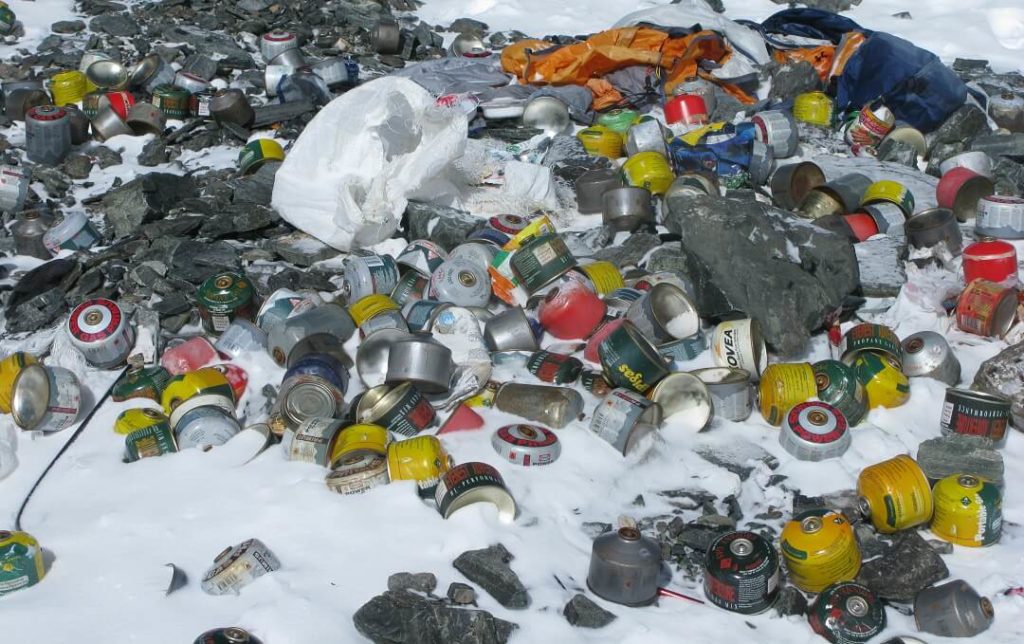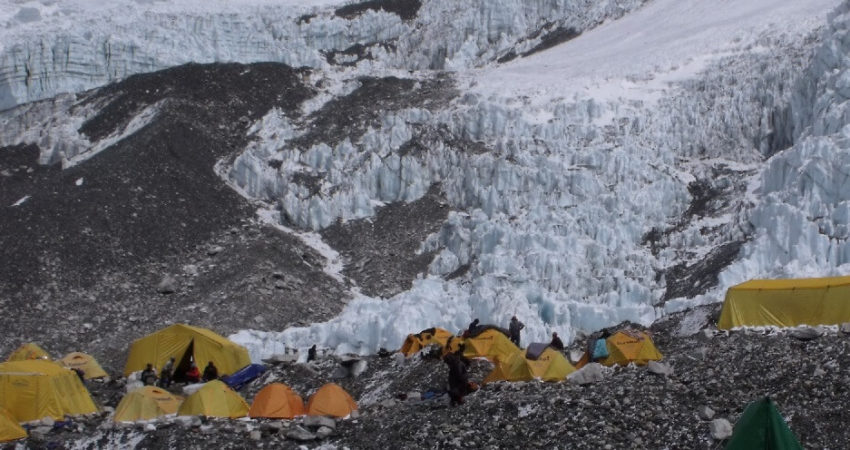Everest lies in the Sagamartha National Park in the Himalayas. In this modern era, rubbish on the mountain is not tolerated. It hadn’t always been so, and a little old rubbish is still evident on the mountain.
Every expedition that climbs Everest has to pay a $4,000 rubbish deposit to the Park Service. Each team must list all their supplies, e.g. the number of tents, stoves, tables, propane cylinders for cooking, oxygen tanks, etc. which they bring up from the lower valleys. All of these items need to be accounted for when the team exits the mountain, or the team will be forced to surrender their deposit. In addition, the team might also receive a substantial fine. Park officers examine base camp to ensure that nothing is left behind, or to identify culprits where possible.
These measures help control rubbish in the modern-day base camp, where there may be almost 1,000 climbers, Sherpas, and porters camped for two months. Nowadays, most of the rubbish found at base camp has been left behind by porters: broken baskets, food wrappers, and so forth.
Above base camp is a very different environment. Almost all teams now remove all their rubbish. There are, however, two exceptions:
- The first exception is at Camp 2. At this location, climbers camp for several days, even weeks; it’s a sort of mini base camp. As a result, some rubbish is to be found here. Note also that Camp 2 has been in the same rough location for decades. The olden climbers used to toss rubbish into deep crevasses. Since glaciers always move downhill towards the sea, that rubbish is now appearing lower down. In the last decade, the Nepalese authorities have offered cash for each kilogram of rubbish carried down from the high camps. Tonnes of rubbish was removed by Sherpas as a result, and continues to be so removed.
- Camp 4, at 7,950m, also has some rubbish. Survival is paramount there, and conditions are life-threatening. Gale force winds destroy tents. Descending climbers are often at their limit carrying down their own supplies; some items are abandoned there. However, the near constant tempests blow most of the debris away. When we were last at Camp 4, we spotted smashed tent poles, half-buried tent material, and a handful of empty cooking gas cylinders.

The rest of the mountain is spotless. The odd wrapper from a snack is quickly picked up or blown away.
In a related note, the media leads many to believe that dead bodies are littered all over Everest. This is not true. Almost 300 people have died on the mountain. Over 100 bodies have been removed. The remainder, in very high locations, have been carried off route by fellow climbers, out of sight. Other bodies have been respectfully buried under rocks, snow, or placed into a crevasse. Most people climbing Everest will never see a body, unless the location was pointed out to them, or a climber had died in the preceding few days.
To sum up, modern climbing teams leave very little behind them on Everest. Sherpas remove the older rubbish, bit by bit, for some extra cash. The governing authority is the Nepalese National Parks Department, which is a division of the Ministry of Tourism. They know it is in the interests of tourism, good press, and indeed Mother Nature, to keep the Himalayas as nature intended.
